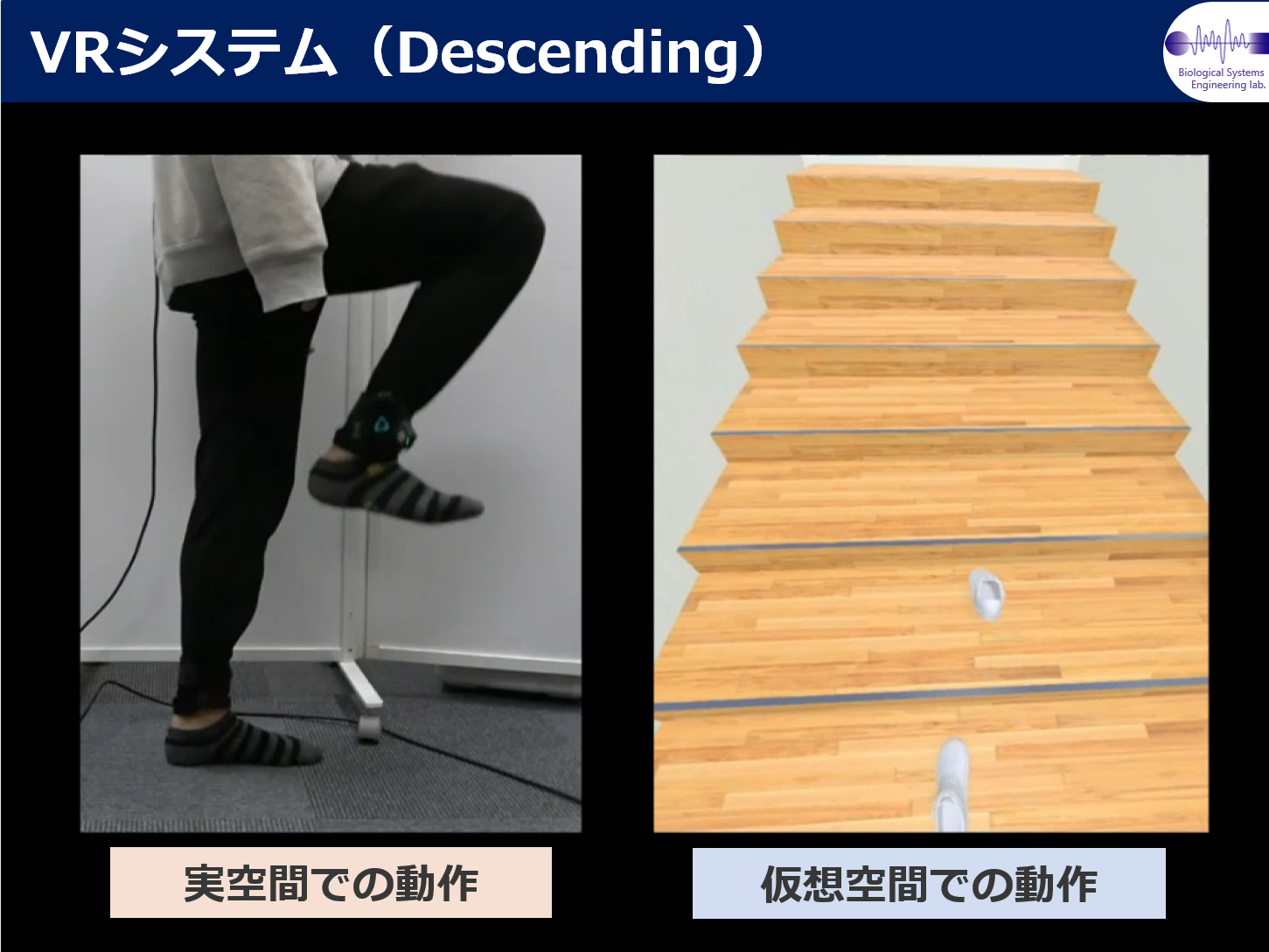Yuichi Kurita, Biological Systems Engineering Lab.
Development of Stair Climbing Training System Using Visual Virtual Reality Display
視覚的VR提示による階段昇降トレーニングシステムの開発
奥村 拓海 (2022年3月博士前期課程修了)
実運動が難しい症例の疼痛マネジメントとして「運動イメージ」の想起が挙げられる.運動イメージとは実運動を伴わず脳内で運動をシミュレートする過程と定義されており,視覚,皮膚感覚,深度感覚などの多様な感覚刺激によって運動イメージを生成して運動を知覚させることができる. 本研究の目的は,視覚と運動感覚による感覚間相互作用によって階段昇降感覚を誘起させるシステムの開発である.さらに,構築した運動イメージ提示システムによるリハビリへの有効性を検証する.本研究では,平坦を歩行しているユーザに階段を昇降している感覚を誘起させるデバイスの開発を行った.VR による視覚情報の提示と足踏み動作による下肢の運動感覚によって,階段昇降感覚の知覚効果を向上させる.また,構築した運動イメージを介入することで,どのような身体的・精神的効果を及ぼすか調査を行った.実験を実施するにあたって,歩行動作が困難な術後早期の患者に対しても容易に運動イメージの提示を可能にする必要がある.そこで,RDWの基本的な考え方を利用して移動量操作を行うことで,平坦な床面の上での足踏み動作を行いながら,疑似的に階段を昇り降りしている感覚を与えることができると考えた.そうすること,足踏み動作に対しても知覚されることなく錯覚的に階段を昇降する運動イメージの提示が可能になる.こうした構築を行った階段昇降時の運動イメージ提示システムを術後早期のリハビリトレーニングとして取り入れることで,実階段での昇降動作にどのような影響を及ぼすのかを臨床介入実験により検証を行った.Motor imageryis used for pain management in cases where actual exercise is difficult. Motor imagery is defined as the process of simulating motion in the brain without the patient having to go through actual motion. Varioussensory stimuli such as vision, cutaneous sensation, and depth sensation can be used to generate motor imagery and perception of motion. This study aimed to develop a system to induce the sensation of stair climbing through the interaction between the visual and the kinesthetic senses. Additionally, we will verify the effectiveness of the developed system for rehabilitation by presenting motor images. In this study, we developed a device that induces the sensation of ascending and descending stairs in users walking on a flat surface. The system that we developed seeks to improve the perceptual effect of the stair-climbing sensation by presenting visual information via VR and motor sensation of the lower limbs by foot stepping. This study also sought to investigate the physical and mental effects of intervention with constructed motor images. In order to conduct the experiment, it was necessary to make it easy to present motor imagery to early postoperative patients who have difficulty walking. Therefore, we considered that by using the basic idea of RDW to manipulate the amount of movement, we could give the user the sensation of ascending and descending stairs in a pseudo-simulated manner while performing the foot-stepping motion on a flat floor. In this way, it is possible to present an illusory motor image of ascending and descending stairs without being perceived in response to the foot-stepping motion. We conducted a clinical intervention experiment to verify the effect of incorporating this system for presenting motor imagery during stair climbing into early postoperative rehabilitation training on actual stair climbing behavior.



